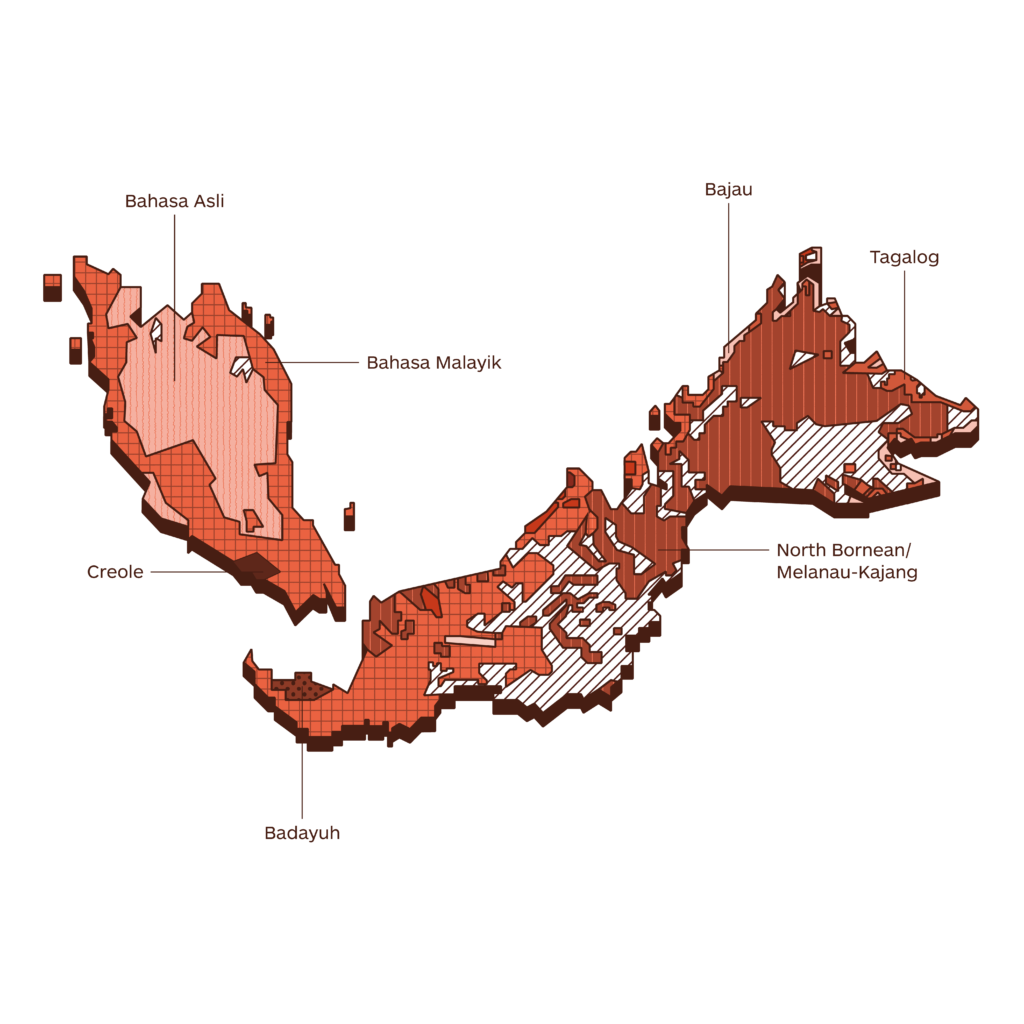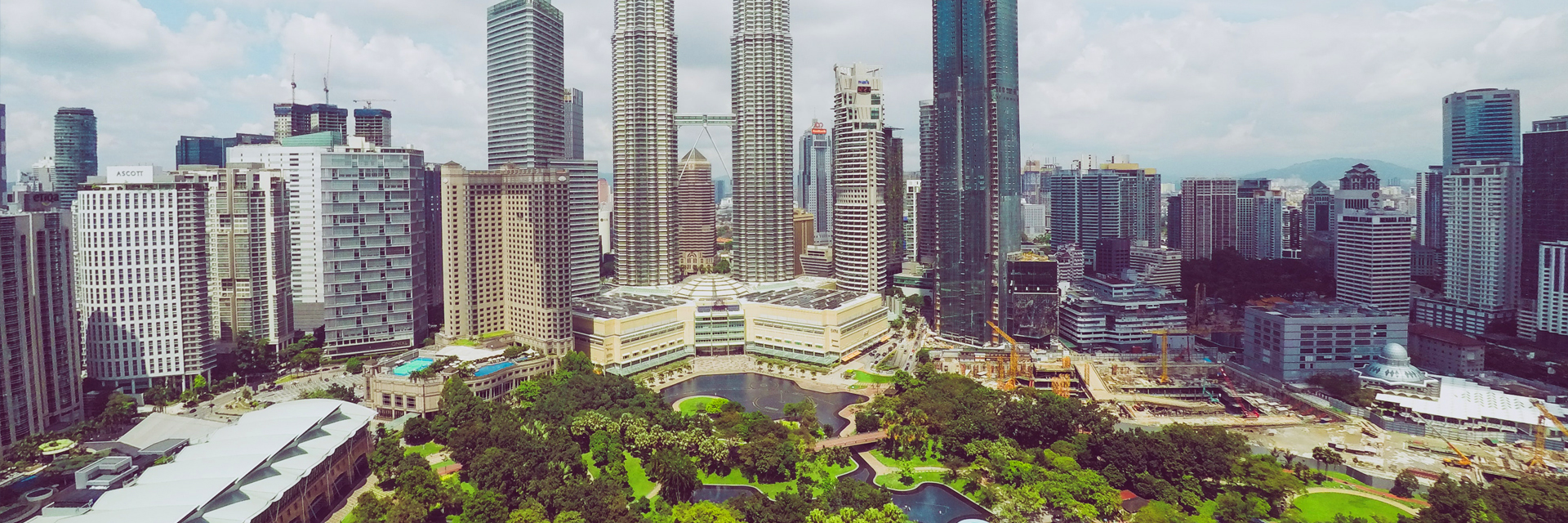Asia
To which language should you translate to localize in Malaysia?
What we know from our community
LAH, SAMA KE? (LAH, IT’S THE SAME?)
“As someone who’s been living in Malaysia my whole life, I never thought that our neighboring country (Singapore) spoke better Bahasa Melayu than me. I always thought that since it was introduced as Bahasa Malaysia when I was in primary school, we Malaysians spoke it better than anyone else. How shallow I was. Until recently, when I heard this comedian from Singapore speak Bahasa Melayu in full, perfect, proper sentences. It blew my mind!
Well, Bahasa Melayu doesn’t just belong to Malaysia and Singapore alone. Indonesia and Brunei speak it as well. And it might be a surprise to some, but many of the words that we use nowadays come from the Philippines.
There’s another special thing about Bahasa Melayu too. Especially the variety shared between Malaysia and Singapore. We tend to add ‘lah’ at the end of sentences. It makes them sound better, more emotional and full of expression, and it makes speakers feel closer to home. On top of that, we can mix and match with other languages, especially in English.
For example, ‘lah’ is the fine line distinguishing between a cold, emotionless sentence and a warm, polite and thoughtful sentence: ‘No need’ and ‘No need lah’.
Another good example: ‘lah’ is used to add emphasis to an adjective: ‘She is so pretty!’ to ‘Why lah she so pretty?’
So how do you know when to use it? I say, come on over here and you’ll master it in no time.”
LANGUAGE INSIGHT
Official language
Malay (58.4%; 20 mln)
Actual languages
Malay (58.4%; 20 mln), Chinese (10.7%; 3.67 mln), Tamil (3.9%; 1.33 mln), Iban (2.8%; 960k), English (1.6%; 548k), Dusun (1.1%; 377k), other (21.5%; 7.37 mln).
What the top 150 best localized websites in the world do in Malaysia
(Top 150 websites listed in the Global by Design ranking – published annually by Byte Level Research, this report provides a list of globally localized websites, showcasing best practices and emerging trends in their globalization)
- 14/150 localize by translating into Malay
- 2/150 localize by translating into Burmese
- 2/150 localizes by translating into Simplified Chinese
- 1/150 localizes by translating into both Malay and Tamil
- 1/150 localizes by translating into both Malay and Malaysian Sign Language
- 1/150 localizes by translating into Malay, Hindi, Bengali, Tamil, Vietnamese and Burmese
- 1/150 localizes by translating into French, Simplified Chinese, German, Spanish and Japanese
- 1/150 localizes by translating into French, Simplified Chinese, Traditional Chinese, German, Spanish, Japanese, Korean, Portuguese, Italian and Russian
- 1/150 localizes by translating into French and Simplified Chinese
- 1/150 localizes by translating into Traditional Chinese
-
3M
-
ABB
-
Accenture
-
Adidas
-
Adobe
-
Airbnb
-
Aldi
-
Amazon
-
American Airlines
-
American Express
-
Apple
-
Audi
-
Autodesk
-
Avis
-
Bayer
-
BMW
-
Booking.com
-
Bosch
-
British Airways
-
Bumble
-
Burberry
-
BYD
-
Canon
-
Capgemini
-
Cartier
-
Caterpillar
-
Chevrolet
-
Cisco Systems
-
Citibank
-
Coca-Cola
-
Costco
-
Dell
-
Deloitte
-
Delta
-
DHL
-
Disney+
-
Dyson
-
eBay
-
Eli Lilly
-
Emirates
-
Ernst & Young
-
Facebook
-
FedEx
-
Ford
-
Four Seasons
-
Fujifilm
-
GE
-
Gillette
-
GoDaddy
-
Google
-
Gucci
-
Haier
-
Heineken
-
Hermès
-
Hertz
-
Hilton
-
Hisense
-
Hitachi
-
Honda
-
Hotels.com
-
HP
-
HP Enterprise
-
HSBC
-
Huawei
-
Hyatt
-
Hyundai
-
IBM
-
IKEA
-
Intel
-
InterContinental Hotels
-
J&J
-
Jack Daniel's
-
Jehovah’s Witnesses
-
John Deere
-
Kellogg's
-
Kia
-
KPMG
-
L'Oréal
-
Land Rover
-
LEGO
-
Lenovo
-
Lexus
-
LG
-
Louis Vuitton
-
Lululemon
-
LUSH
-
Marriott
-
MasterCard
-
McDonald's
-
Mercedes-Benz
-
Merck
-
Microsoft
-
Mitsubishi Electric
-
Nestlé
-
Netflix
-
Nike
-
Nikon
-
Nintendo
-
Nio
-
Nissan
-
NIVEA
-
Oracle
-
Pampers
-
Panasonic
-
PayPal
-
Pepsi
-
Pfizer
-
Philips
-
Pitney Bowes
-
Porsche
-
Procter & Gamble
-
PWC
-
Revolut
-
Rolex
-
Royal Caribbean
-
Salesforce
-
Samsung
-
Sanofi
-
SAP
-
Sephora
-
Shopify
-
Siemens
-
Sony
-
Spotify
-
Starbucks
-
Steelcase
-
Stripe
-
Subaru
-
Tesla
-
The Church of Jesus Christ of Latter-day Saints
-
Tiffany
-
Tinder
-
Toshiba
-
Toyota
-
TripAdvisor
-
Uber
-
United Airlines
-
UPS
-
Visa
-
Volkswagen
-
Volvo Cars
-
Vrbo
-
Walmart
-
Western Union
-
Wikipedia
-
Wise
-
WordPress
-
Workday
-
Xerox
-
Xiaomi (Mi)
-
Zara
-
Zoom
If you need others information, below you can find a selection of economic/social/cultural data
Overview
Language
Official language
Malay (58.4%)
T-index
0.45%
T-Index ranks countries according to their potential for online sales.
Other languages
Chinese (10.7%), Tamil (3.9%), Iban (2.8%), English (1.6%), Dusun (1.1%), other (21.5%).
English
High proficiency (EF) – 25 of 113 countries/regions in the world- 3/23 position in Asia.
Demography
Capital: Kuala Lumpur
Currency: Malaysian ringgit
Population: 34.30 mln
Population density: 102/km2
Economy
GDP: 399.65 billion USD (2023)
GDP per capita: 11,648.7 USD (2023)
Exports: $378 billion (2022)
Statistics
Internet users: 97.4% penetration, 33.59 million
Unemployment rate: 3.9% (2022)
Urbanisation: 79% (2023)
Literacy: 94.85% (2018)
Conventions
Numbering system
Arabic numbering system and dot as decimal separator.
Date format: yyyy-mm-dd / dd-mm-yyyy
Time: 24h time system
Country code: 0060
Language data sources: Worldatlas/Britannica//EF/Wikipedia/Worlddata.info; Demography data sources: IMF/Worldometers; Conventions data source: Wikipedia; Economy data sources: WTO/OEC/CIA/Esomar/Datareportal; Statistics data sources: Datareportal/WorldBank/UN/UNESCO/CEIC/IMF/Culturalatlas/Commisceoglobal
Facts and data
Economy
Imports
$294 billion (2022). Integrated Circuits ($45.1B), Refined Petroleum ($27.1B), Crude Petroleum ($12.2B), Coal Briquettes ($6.43B), and Broadcasting Equipment ($4.38B), importing mostly from China ($82B), Singapore ($35.9B), United States ($18.4B), Chinese Taipei ($17.7B), and Japan ($16B).
In 2022, Malaysia was the world’s biggest importer of Aluminium Powder ($292M), Motor vehicle (8701 to 8705) chassis fitted with engine ($152M), and Scrap Tin ($44.1M).
Financial inclusion factors (over 15 years of age)
• 88.2% have an account with a financial institution
• 7.9% have a credit card
• 28% have a mobile money account
• 43.7% make online purchases
Ease of doing business
Easy to conduct business (81.5 out of 100) 3rd out of 25 East Asian and Pacific countries 12th worldwide out of 190 countries (2022, World Bank).
Global Innovation Index
Ranked 8th out of 16 East Asian and Oceanian countries, 36th out of 132 worldwide.
The Global Innovation Index captures the innovation
ecosystem performance of 132 economies and tracks the most recent global innovation trends.
Exports
$378 billion (2022). Integrated Circuits ($78.9B), Refined Petroleum ($38.5B), Petroleum Gas ($19.5B), Palm Oil ($17.7B), and Crude Petroleum ($10.2B), exporting mostly to Singapore ($53.8B), China ($48.5B), United States ($44.2B), Japan ($23.6B), and Hong Kong ($21.7B).
In 2022, Malaysia was the world’s biggest exporter of Oscilloscopes ($5.99B), Rubber Apparel ($4.78B), Other Vegetable Oils ($1.66B), Rare-Earth Metal Compounds ($690M), and Copper Powder ($664M).
Main local online stores
Nile.com, Lazada.com.my, Zalora.com.my, Rakuten.com.my, Superbuy.my, Ensogo.com.my, Goshop.com.my
Economic freedom
“Moderately free” (65.7 out of 100) 9th out of 39 countries in Asia-Pacific, 45th worldwide out of 184 countries (2024, Heritage Foundation and Wall Street Journal).
Economy data sources: WTO/OEC/CIA/Esomar/Datareportal
Service Imports (2019)
Service Exports (2019)
Source: OEC
Trade balance of goods from 2013 to 2023
Source: Statista
Historical Data Trade Imports
The following section uses historical trade data imports from partners of Malaysia.
Historical Data Trade Exports
The following section uses historical trade data exports from partners of Malaysia.
The Top Export Opportunities for Malaysia by Relatedness
Relatedness measures the distance between a country's current exports and each product by showing only products that Malaysia is not specialized in.
Malaysia's Most Complex Exports
The Product Complexity Index (PCI) measures the knowledge intensity of a product by considering the knowledge intensity of its exporters.
Malaysia's Most Specialized Products
Specialization is measured using Revealed Comparative Advantage (RCA), an index that takes the ratio between Malaysia observed and expected exports in each product.
Source: OEC
Perception of products made in selected countries in 2017
Source: Statista
Which attributes do you associate with products made in Malaysia?
Source: Statista
Market Growth Imports (2019)
This score represents the likelihood that the given country will start importing that product in the next few years. It forecasts the opening of a new specific market.
Market Growth Exports (2019)
This score represents the likelihood that the given country will start exporting that product in the next few years. It forecasts the opening of a new specific market.
Source: OEC
Foreign direct investment, net inflows (BoP, current US$)
Source: WorldBank

T-index
Reach most of the online purchasing power
T-Index ranks countries according to their potential for online sales. It estimates the market share of each country in relation to global e-commerce.
Try it nowMedia
Media language Malay, English
Information channels
Malaysia “seems to have a rich media landscape, but the state media wield a great deal of influence”, says Reporters Without Borders (RSF). The media avoid taboo subjects or criticism of politicians and officials, and legislation allows for the jailing of journalists, including under the sedition law, the Official Secrets Act, and a 2021 “anti-fake news” ordinance. The TV sector includes state-owned and private networks, and pay TV platforms. Media ownership is highly concentrated. Media Prima is the largest conglomerate. Its national TV networks include TV3, the biggest terrestrial broadcaster. Print newspapers have experienced falling circulations. State-owned Radio Television Malaysia (RTM) operates two main TV networks. Private stations broadcast in Malay, Tamil, Chinese and English. The online media are very active and some outlets “cherish their editorial autonomy”, says RSF. Online and social media are the main sources of news.
The press
New Straits Times – English-language daily
The Star – English-language daily
The Sun – English-language daily
The Malay Mail – English-language daily
Television
Radio Television Malaysia (RTM) – state-run, operates TV1, TV2
TV3 – commercial terrestrial network
ntv7 – commercial terrestrial network
8TV – commercial terrestrial network
TV9 – commercial terrestrial network
Astro – pay TV, networks include Astro Awani news channel
Radio
Radio Television Malaysia (RTM) – state-run, operates some 30 national and regional networks
Era – private
Hot FM –private
Sinar – private
News agency
Bernama – state-run agency
Malaysiakini – news site
Free Malaysia –Today (FMT) – news site
Media data source: BBC
Internet Data
Internet users
97.4% penetration, 33.59 million
Share of web traffic by device
56.78% mobile phones, 39.75% computers (laptops and desktops), 3.46% tablet devices, others 0.01%
Median speed of mobile Internet connection
66.64 Mbps
Median speed of fixed Internet connection
112.21 Mbps
Mobile connection as a percentage of total population 129.2%
Percentage of mobile connections that are broadband (3G-5G) 95.7%
Most popular web search engines
Google (96.14%), Bing (2.42%), Yahoo! (1.05%), Yandex (0.13%), DuckDuckGo (0.11%), other (0.16%).
Most used social media
Facebook (61.27%), YouTube (17.33%), Instagram (9.94%), Pinterest (5.28%), Twitter (4.78%), Reddit (0.77%), LinkedIn (0.33%), other (0.3%).
Internet data sources: Datareportal/Statcounter
Social statistics
Life expectancy
76 yrs (2022)
Current health expenditure
4.38% of GDP
Current education expenditure
94.4% of total expenditure in public institutions
Ethnicity
The 3 main ethnic groups generally work well together but from time to time certain problems arise due to their totally contrasting natures. Malays are usually suspicious of Chinese Malaysians and Indians. Malaysians of Chinese descent tend to be more aggressive in their approach towards business and are frequently geared toward being successful. Malays, on the other hand, due to history from the colonial days are slower in their approach. In recent years though, Malays have achieved quite a bit through government programs. The New Economic Policy (NEP) grants special privilege to the Malays and through this policy the economic level of this group has risen, although it still not quite on par with the Chinese Malaysians. These privileges and the differences in economic wealth between the races have caused some friction but the NEP has been generally well accepted; the Chinese have also gained from the NEP.
Resentment does arise ocasionally: Malays will resent the Chinese worker especially if he or she is a hard worker. This is a rather difficult issue to understand but all these are related to local history. Perhaps reading the book called The Malay Dilemma by Dr Mahathir Mohammad will clear some of the unanswered questions. Indians are more likely to sit on the fence, not taking sides and leaning where the wind blows.
Class
Class exists in Malaysian society. For instance royalty is treated with deference here. People with titles are also treated differently although it is much resented by the bulk of the middle class population. Recent years have seen much upheaval about changing these class divisions but not much has changed in the meantime. This class division scenario is similar to Britain’s but the so-called higher classes, like royalty and people with titles, do not have public profiles.
Gender
Malaysia is a male-dominated society, although it is well accepted that women and men have equal opportunities. Women make up about half the workforce in Malaysia and although in recent years women have made tremendous leaps in acquiring high-level jobs, most top executive posts are still held by men. Women are well treated and respected but in certain matters of women’s rights, Malaysia has still a long way compared to the West. At the workplace, women and men work well together and are remunerated based on their abilities and regardless of gender.
Religion
Malaysia is a multi-religious society. Islam is the official religion of this country but other religious beliefs are practiced freely. There are more churches than there are mosques. The four main religions are Islam (about half of the population), Buddhism (about 20%), Hinduism (13%) and Christianity. Catholics form the largest number of Christians, the bulk being in East Malaysia (on Borneo). Malaysians respect each other’s religious beliefs and do not tolerate forms of religious extremism in any of the religions. Most workplaces provide a small prayer room for Muslims since they pray 5 times a day and at least 2 of the prayer times fall during working hours. Regardless of their religion, Malaysians work well together and do not seem to have serious problems with their differences in religious backgrounds.
Corruption perceptions Index
Malaysia scored 47 out of 100, ranked 61st out 180 countries worldwide.
CO2 emissions
7.4 metric tons per capita
World Happiness Index
Malaysia ranked 70 out of 146 countries, with a score of 5.711.
Social statistics sources: WorldBank/UN/UNESCO/CEIC/IMF
The Data Factbook is a work in progress project. Our community is helping us to fill it up always with new and updated data. Your contribution is precious. If you want to help us, please write your advices at imminent@translated.com
Country Curiosities
From 1963 to 1965, Singapore was one of the fourteen states that formed Malaysia. However, on August 9, 1965, Singapore was expelled following riots fueled by economic and political tensions between various cultural groups. This pivotal moment led Singapore to emerge as an independent city-state. Interestingly, one theory suggests that the ‘si’ in Malaysia alludes to Singapore, although the country’s name has remained unchanged since the separation.
Additionally…
- Malaysia stands at the forefront of technological innovation in Southeast Asia, with a burgeoning ecosystem for AI.
- The majority of the population is Muslim: the percentage of the Muslim population in Malaysia is around 61.3% of the total population.
- Before adopting the name Malaysia, the country behind the cartoon Upin & Ipin was originally called Aurea Chersonesus, meaning “golden peninsula.“
- With approximately 66,000 kilometers of toll roads, Malaysia has the longest toll road network globally, surpassing the Earth’s circumference.
- Home to the iconic Petronas Towers, which stand at 451.9 meters, Malaysia housed the world’s tallest buildings from 1998 to 2004.
- Ethnic Malays constitute only half of Malaysia’s over 31 million population, with the rest including Chinese, Indians, and various indigenous groups.
- Malaysia is the third-largest natural rubber producer in the world and the world’s largest supplier of rubber gloves.
- In some Malaysian buildings, you might see a “3A” floor instead of the fourth floor, as the number four sounds like “death” in Chinese.
Languages research
Dialects spoken in Malaysia

Legend
-
Bahasa Asli
-
Bahasa Malayik
-
Bajau
-
Tagalog
-
North Bornean/ Melanau-Kajang
-
Badayuh
-
Creole
-
Uninhabited
The geographical distribution of languages that you will find in the maps published in this section is a work in progress. Our community is helping us to fill it up with always new and updated data. Your contribution is precious. If you want to help us, please write to imminent.factbook@translated.com
Photo credit: Sadie Tapier, Unsplash


